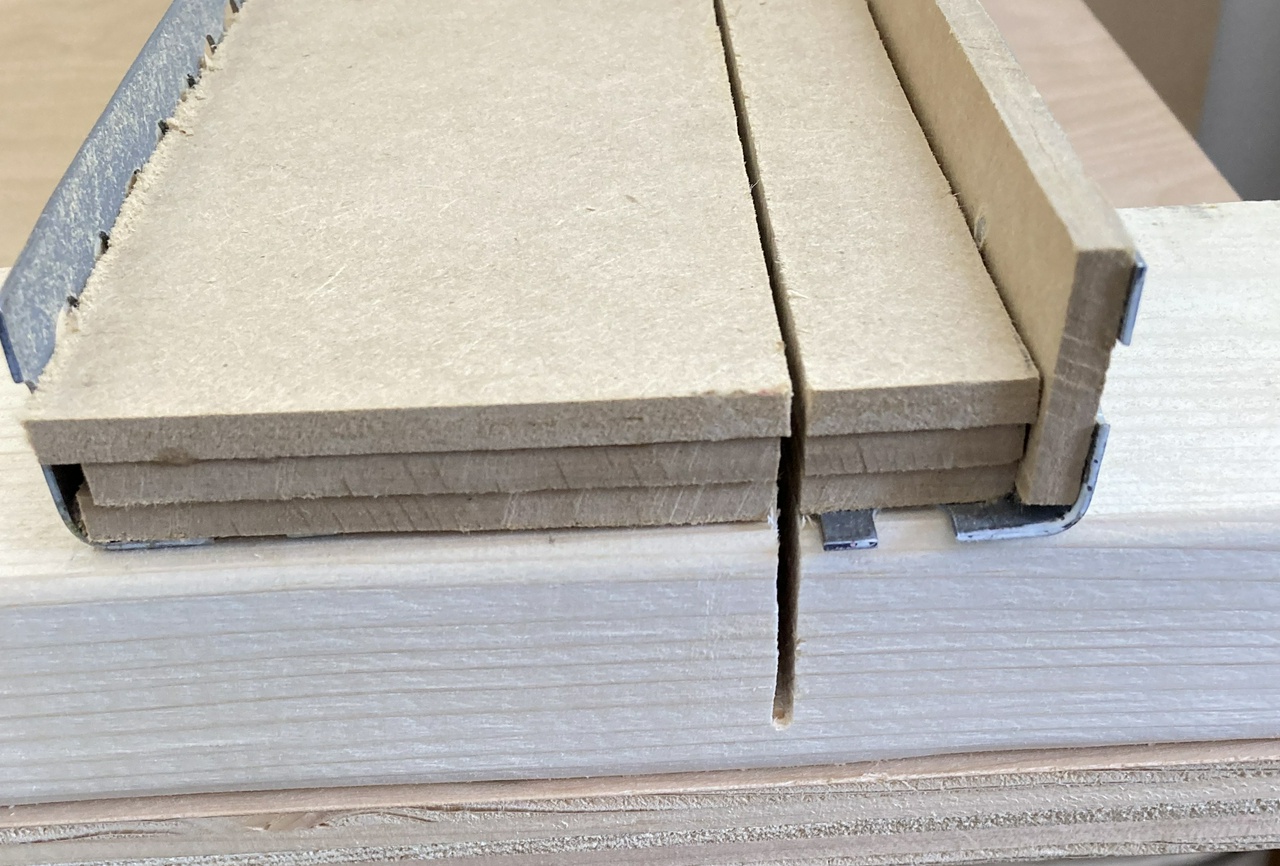Circular Saw Track Guide
A while back I saw a guide that MaFe had made for his circular saw at his allotment house. I thought it was a pretty neat idea and now that I have a bunch of cross-cutting coming when I start on my bookcases, I decided I needed one.

It's pretty simple. A 2×2 foot piece of ¾” plywood, two 2-foot tubafors, two 2-foot pieces of angle iron, and a few pieces of quarter-inch MDF.

I glued and screwed the tubafors to the plywood. Next, I screwed the angle iron to the tubafors, making sure I had right angles (probably the most important bit). Covered the screws with some MDF I glued down, and then added a couple more layers of MDF so the motor housing on the saw can't hit the angle iron, no matter how deep I adjust the saw.

The only snag is that this means the saw blade can't quite reach all the way to the plywood base, so I'll likely add one more piece of MDF on top of the base to raise the piece of wood I'm cutting. But I want to figure out the stop I'm going to add before I raise the base.

I also added a few stops. They're basically a scrap piece of pine screwed down to the base, with marks on the far 2x4 to show me where to align each stop. Simple, and fairly fool-proof. I cut board for 70 cases and a dozen plinths, and the biggest variance I could find as I was stacking up the cases was 1/16 inch.
Contents #woodworking #jig #handyTools
Discuss... Reply to this in the fediverse: @davepolaschek@writing.exchange